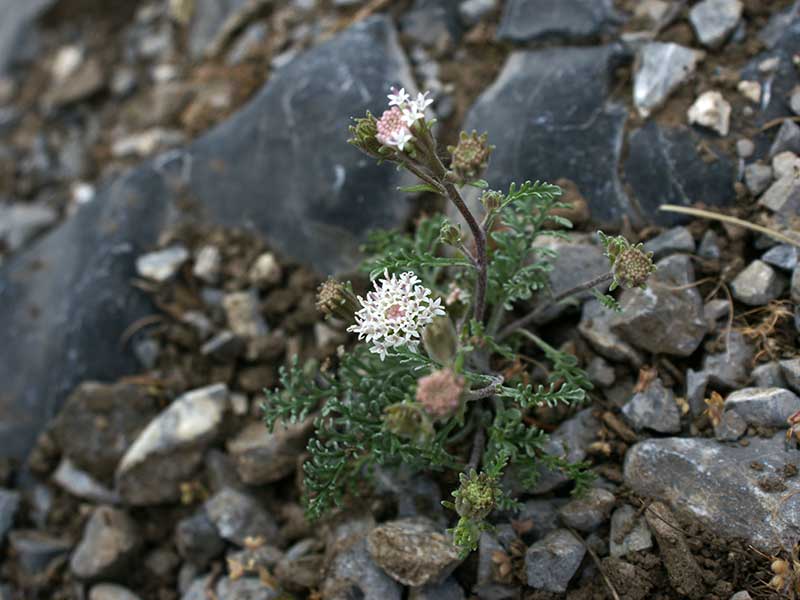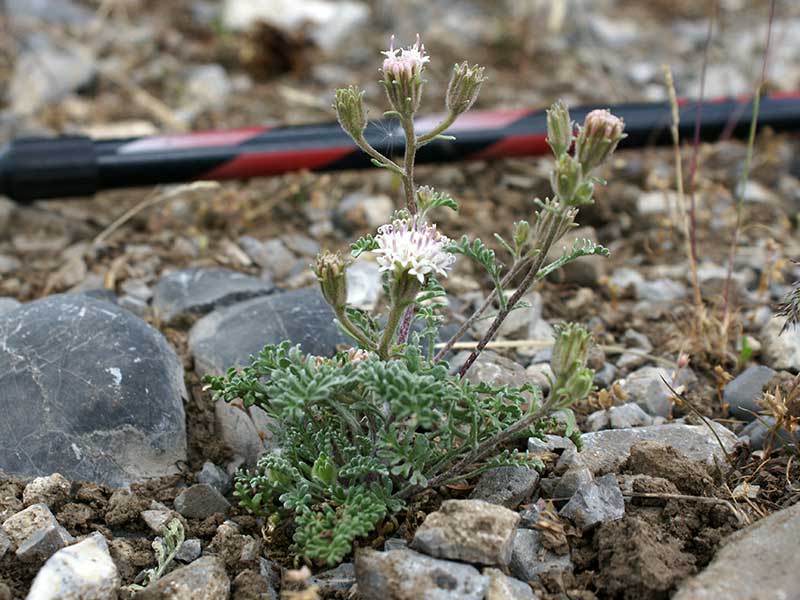Chaenactis douglasii / Douglas dusty maiden
- leaves “woolly” or hairy; intricately divided
- leaf and lobe tips curled or twisted
- flowering stems coated with “cobwebby” hairs
- flower heads of white/pinkish tubular disk florets in a glandular cup
- forked styles protrude past tubes
- often in rocky areas and crevices
Also known as: hoary pincushion
Dusty maiden is a small, perennial herb found in a variety of habitats, and especially harsh ones, like on bare rocks or in crevices. The photos in the gallery were taken on the somewhat barren hill at the top of Dry Henderson canyon. The plant itself is rather unique in that the leaves are “woolly” or hairy, and intricately divided into many lobes. Their grey-ish appearance is what gives the plant its common name. The leaf and lobe tips are curled or twisted. The flowering stems are coated with what has been described as “cobwebby” hairs. Individual plants can form mounds a foot or more across.
Atop the stems and a bit higher than the leaves are inflorescences with one or more flower heads, each about ¾ inch across. The flower head is made up of several (or up to 50) white or pinkish tubular flowers (disk florets in a glandular cup) with protruding, forked styles. They are white or pale pink initially, darkening later in the season.
Cross pollination of dusty maidens is much more efficient than selfing, the main pollinators being generalist bees, apparently including 175 species in 39 genera and all 6 North American bee families.
Interesting bits – A cavity-nesting bee, Osmia californica, and the honey bee – both of which are “manageable” – appear most promising for pollinating dusty maiden that is being farmed for seed. The idea here is that this species is potentially useful in rangeland rehabilitations, although its small size will certainly not make it a major contributor to ground cover.
| Color | |
|---|---|
| Family | |
| Blossom size | |
| Inflorescence size | |
| Inflorescence type | |
| When? | |
| Where? |


